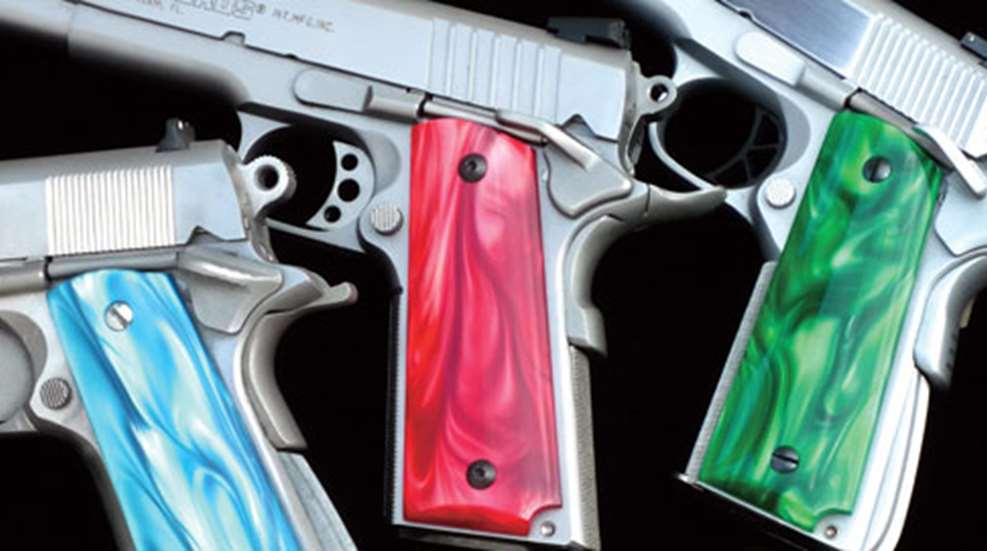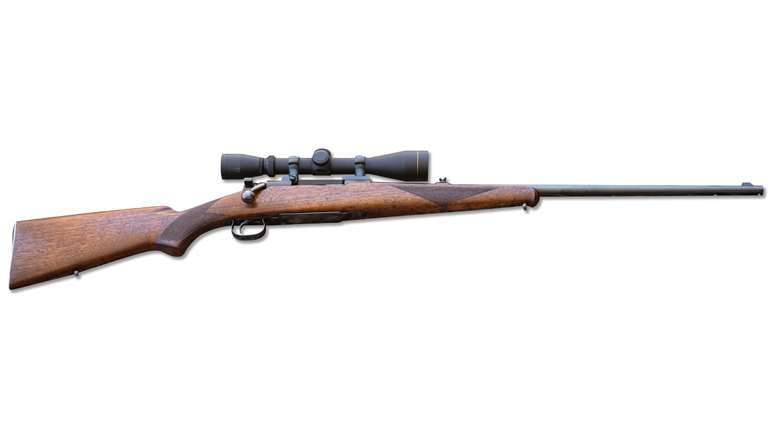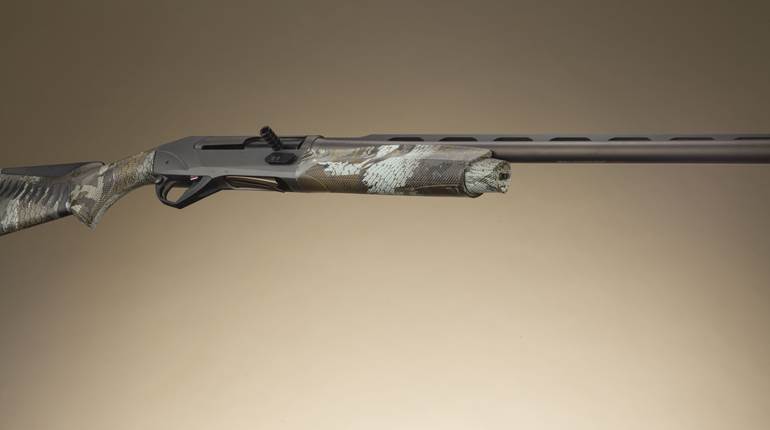
7/18/2012
Today’s ongoing proliferation of molded, rubberized, and otherwise mass-produced stocks for handguns has resulted in many shooters doing an about-face and returning to natural materials and traditional designs. Whether a yearning for the past or a quest for individuality, distinctive aftermarket stocks are one of the quickest, easiest, and most dramatic ways to give your handguns instant personality in a world where sameness seems to dominate. That is precisely what led me to discover the uniqueness of Eagle Grips 30 years ago.
It was during the 1982 Las Vegas Antique Arms Show, as the proud owner of a Smith & Wesson Model 29 purchased a few years earlier, that I was looking for a set of stocks that would make me even prouder. Not that there was anything wrong with the checkered Goncalo Alves target stocks that came with my Model 29, but they made it look like every other Model 29. As a young gunwriter, I felt I should have something different and befitting an 83⁄8-inch-barreled .44 Mag.—not showy, but elegant and subtle. And I found it on a table laden with pearl, ivory, stag and rosewood stocks, behind which sat a medium-built man in coat and tie, wearing a turban, and with a beard as dark as the ebony grips he was displaying. I soon learned this affable naturalized American citizen from India was Harbans Singh, president of Eagle Grips, a company that, while little known at the time, took great pride in its perfect-fitting handmade grips.
Commenting on the smooth rosewood target stocks I had picked up, Singh explained that the wood had been aged for a minimum of four months and the two halves of the stock were cut from the same block, so that the grain book-matched perfectly on both sides. After carving and finishing to a glass-smooth surface, each stock was meticulously hand rubbed with natural oils from the rosewood to create a deep, lustrous patina, without using any stains or varnish.
Needless to say, I bought the stocks, which cozied up to the N-frame of my Model 29 as if they had always been there. Moreover, they gave my Model 29 that businesslike sense of style and flair I had been looking for. Suitably impressed, I wanted to share my discovery of Eagle Grips’ artistry with others. Consequently, my article appeared in American Rifleman (January 1983, p. 33), and the rest, as they say, is history.
Eagle Grips today is one of the leading creators and suppliers of stocks for practically every handgun made and also produces stocks for companies such as Colt, Smith & Wesson, and Cimarron Fire Arms, to name but a few. Harbans Singh recently retired from the company he created, but his son, Raj, is now president of Eagle Grips. An NRA Life member and an avid, lifelong shooter, he continues the Eagle Grips tradition started by his father while bringing new innovations to the company.
In 1999, for competitive single-action shooters, Raj Singh created the Gunfighter Grip, consisting of a beveled, thinner body that aides instinctive point shooting, hand-checkered side panels for more secure grasp, and an ambidextrous thumb swell that anchors the gun for fast repeat shots without having to shift your grip each time the hammer is cocked.
Then there is the Secret Service Grip, developed with Paul Huebl, a former law enforcement officer. With non-snag smoothness and gun-anchoring finger grooves, it has become the ultimate “carry grip” for J-frame revolvers. At the opposite end of the spectrum, Eagle Grips has brought back the retro-look of the 1950s with its rosewood Heritage series, which features oversize target stocks with hand-cut checkering for revolvers such as the Colt Python and S&W K, L and N frames.
All Eagle Grips products are made one at a time, by skilled craftsmen either in India or in its Carol Stream, Ill., factory. Moreover, in his company’s U.S. operations Singh has purchased CNC machinery to produce some of the closest tolerances in the industry for ivory and other materials, thus ensuring a perfect fit for guns such as M1911s and various Ruger models. Not surprisingly, Eagle Grips maintains a vast inventory of frames for all major, and many minor, handguns, in order to substantiate its motto, “For The Perfect Mating of Iron to Hand.” The only stocks that routinely require handfitting are those for the Colt Single Action Army and the Italian clones. I can state from personal experience that Ruger Vaquero stockshave a precise “drop in” fit.
A recent innovation is Kirinite stocks from the Art Jewel Collection. Hand cut and polished from costly resin, the marbleized stocks are available in green, blue, yellow and red and are individually cut, shaped, and polished. In addition to the extremes of rosewood and Kirinite, and depending upon make and model of handgun, Eagle Grips are currently available in elk horn, elephant ivory, Ultra-Ivory (a synthetic featuring an ivory-like grain), Ultra Pearl and Ultra Pearl Black (using a proprietary acrylic that does away with the perplexing real pearl problem of chipping), Indian Ebony, and America’s last remaining supply of genuine Sambar stag. All checkering is hand-cut, and smooth finishes are meticulously hand-polished with wet sandpaper finishing up to 1,200 grit, which results in a remarkably smooth surface. Needless to say, hand-making each stock is a labor-intensive process, and it usually takes up to three to six weeks for delivery, although some basic styles—such as for Rugers and certain M1911 platforms—are often kept in stock. Depending on material and style, Eagle Grip prices range from $50 for a standard rosewood two-panel Hi-Power stock set to $650 for single-action genuine ivories.
“We’re a small company,” said Raj. “We have only 12 people working for us. So I try to personally inspect every grip. I won’t sell any grip without first trying it on a gun myself. That way, I know it is going to fit a customer’s gun and it’s going to look good.”
As testament to this statement, today most of my “working” guns are stocked with Eagle Grips Ultra-Ivory, elk horn, stag or rosewood. And they all fit, and look good. Which brings to mind my original 1983 American Rifleman article, where I recounted the true story of a customer who was upset with Eagle Grips because they didn’t make any “natural” plastic grips. Today I suspect that same individual would be equally irate at Eagle Grip’s lack of injection-molded rubber grips. And just like his father, that is exactly the way Raj Singh wants it.























![Auto[47]](/media/121jogez/auto-47.jpg?anchor=center&mode=crop&width=770&height=430&rnd=134090788010670000&quality=60)
![Auto[47]](/media/121jogez/auto-47.jpg?anchor=center&mode=crop&width=150&height=150&rnd=134090788010670000&quality=60)











